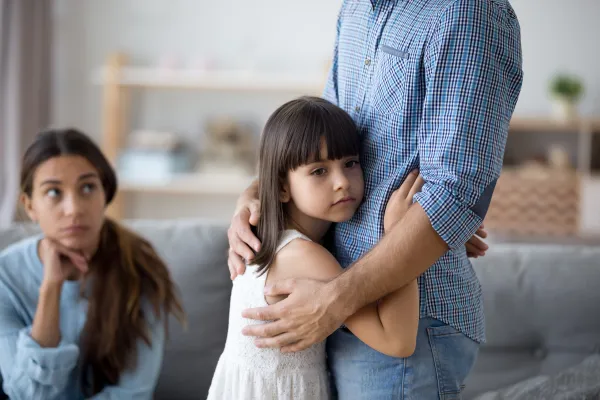

What is Ambivalent Attachment Style and How Do You Cope With It?
John Bowlby, a psychologist who pioneered attachment theory, presented different attachment styles that can help understand human relationships. In his attachment theory, he explained how the bonds formed with primary caregivers in early childhood shape how we relate emotionally to ourselves and others until adulthood. One of the key attachment styles identified in this theory is ambivalent attachment, also known as anxious-preoccupied attachment. This attachment style is characterized by clinginess, dependency, anxiety, and uncertainty. It often stems from inconsistent and unpredictable caregiving during early development.
Let’s find out more about what ambivalent attachment is, its development, and how it manifests in adult relationships.
Characteristics of Ambivalent Attachment
1. Clinginess and Dependency
People with ambivalent attachment often show clinginess and dependency. They have a deep-seated fear of abandonment and are constantly seeking reassurance and validation from their partners. This need for constant affirmation can lead to behaviors such as excessive calling or texting, needing to be in constant contact, and feeling stressed when their partner is not immediately available.
2. Anxiety and Uncertainty
Anxiety is a core feature of ambivalent attachment. People with this attachment style are often preoccupied with thoughts about their relationships and fear that their partner does not truly love them or might leave them. This anxiety can manifest as hypervigilance to their partner's behavior, interpreting neutral actions as signs of rejection or loss of interest.
3. Inconsistent Emotional Regulation
Due to their early experiences, those with ambivalent attachment may struggle with emotional regulation. They can swing between intense affection and neediness to frustration and anger if their emotional needs are not met. This inconsistency can make relationships tumultuous and challenging for both partners.
Development of Ambivalent Attachment
Ambivalent attachment typically develops during early childhood as a result of inconsistent and unpredictable caregiving. When caregivers are sometimes responsive and nurturing but at other times distant or neglectful, the child learns that their needs might be met, but there is no guarantee. This inconsistency creates a sense of anxiety and uncertainty in the child, who becomes hyper-focused on maintaining proximity to the caregiver to ensure their needs are met.
Inconsistent caregiving can arise from various situations, such as a caregiver dealing with their own emotional issues, mental health problems, or external stressors that affect their ability to provide stable and predictable care. The child learns to be anxious and clingy as a way to keep the caregiver close, which then leads to the development of ambivalent attachment.
Impacts on Adult Relationships
Ambivalent attachment can significantly impact adult relationships, often leading to patterns that are challenging for those involved in the relationship. How does it impact adult relationships further?
1. Fear of Abandonment
People with ambivalent attachment may have an overwhelming fear of abandonment. This fear can drive behaviors such as excessive jealousy, controlling behaviors, and a need for constant reassurance. Their partners may feel smothered or overwhelmed by the constant demands for attention and validation.
2. Difficulty Trusting
People with ambivalent attachment may struggle with trusting others fully. They might question their partner's love and commitment, leading to frequent conflicts and misunderstandings. This can destroy the foundation of the relationship, making it difficult for both partners to feel secure.
3. Emotional Volatility
The emotional volatility associated with ambivalent attachment can create a rollercoaster drama in relationships. People with this attachment style may find themselves constantly dealing with emotional highs and lows, which can be exhausting and damaging over time.
How to Cope With Ambivalent Attachment
Understanding and managing ambivalent attachment requires both self-awareness and active efforts to address underlying fears and behaviors. Here are a few tips:
1. Self-Reflection and Awareness
This is the first step for those with ambivalent attachment: recognize their attachment patterns and understand how their early experiences have shaped their current behaviors. Journaling, therapy, or discussing attachment styles with a trusted friend or partner can help with this process.
2. Develop Healthy Communication
Healthy communication is important in managing ambivalent attachment. Expressing needs and fears in a constructive way is encouraged and accusations or demands are discouraged. If you grew up with ambivalent attachment, you can work together with the people you are in relationship with to create open, honest, and supportive communication channels to help alleviate anxiety and build trust.
3. Build Emotional Regulation Skills
Learning to regulate emotions is essential for people with ambivalent attachment. Mindfulness, cognitive behavioral strategies, and breathing exercises may be helpful techniques to manage anxiety and emotional outbursts. Therapy, particularly cognitive-behavioral therapy (CBT) and dialectical behavior therapy (DBT), can be especially beneficial in developing these skills.
4. Seek Professional Help
For many, working with a therapist can provide invaluable support in understanding and addressing ambivalent attachment. Therapy can offer a safe space to explore past experiences, develop healthy relationship cycles, and build self-esteem. Therapy for couples can also help them understand each other's attachment styles and learn strategies to support each other effectively.
Understanding and addressing ambivalent attachment is a vital step towards healthy relationships and emotional well-being.
ABOUT US

Jeanne Prinzivalli
Therapist + Coach
I help ambitious, anxious women learn how to trust and put themselves first, so they can stop burning themselves out trying to meet other people's expectations.
SELF CARE CONTINUUM
CLIENT LINKS
LET'S CONNECT
Let’s get you started on relief from self-sabotaging patterns so you can move forward with your life and career passions.
Self Care Continuum Copyright © 2023.




